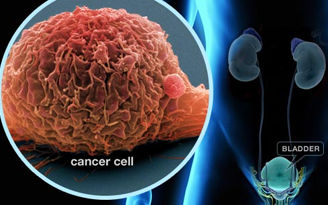JUST WHAT KIDNEY STONE?
Kidney pebbles are hard objects, made up of countless small crystals. Most calcium oxalate stone(s) form on the interior surface of the kidney, where urine leaves the kidney tissue and enters the urinary getting involved in collecting system. Calcium oxalate stone(s) can be small, such as a tiny pebble or wheat of sand, but often are much larger.
The job of the kidneys is to keep up the human body's balance of water, mineral deposits and salts. Urine is the product of this filtering process. Under certain conditions, substances normally blended in urine such as calcium, oxalate, and phosphate, become too concentrated and can separate out as crystals. A kidney rock develops when these deposits adhere to one another, gathering into a tiny mass, or stone.
Calcium oxalate stone(s) come in a variety of mineral types.
Calcium mineral Stones: Most calcium oxalate stone(s) are composed of calcium and oxalate. A large number of people who form calcium mineral containing stones have too much calcium in their urine, a problem known as hypercalciuria. There are many reasons why hypercalciuria may occur. Several people absorb too much calcium from their digestive tract. Others absorb too much calcium from their bone. Still others have kidneys which do not effectively regulate the amount of calcium they release into the urine. You will discover a lot of people who form calcium oxalate stones therefore of too much oxalate in the urine, a condition known as hyperoxaluria. In some cases, too much oxalate in the urine is a result of other bowel disease, such as Crohn's disease or ulcerative colitis, or other times it can be a result of prior intestinal surgery. Calcium supplements phosphate stones, another kind of calcium stone, are much less common than calcium oxalate stones. Pertaining to some people, calcium phosphate stones form therefore of the medical condition known as renal tubular acidosis. urology treatment center in india
Struvite Stones: Some patients form stones that are consisting of a combination of magnesium, ammonium, phosphate, and calcium carbonate, which is recognized as struvite. These types of stones form therefore of infection with certain types of bacteria that can produce ammonia. Ammonia functions to raise the ph level of urine which makes it alkaline and stimulates the formation of struvite.
Uric Acid Stones: The crystals is produced when the entire body metabolizes protein. Once the pH of a stream of pee drops below 5. 5, urine becomes saturated with uric acid crystals, a condition known as hyperuricosuria. When there is too much uric acid in the urine, stones can form. Uric acid gallstones are more common in people who consume large amounts of protein, such as that present in red meat or poultry. People who have gout can also form uric acid stones.
Cystine Stones: Cystine stones are rare, and they form only in folks with an inherited metabolic disorder that causes high levels of cystine in the urine, a condition known as cystinuria.
Read more: Kidney Stone treatment in India


Thanks For The Use-full Information
ReplyDeleteIf anyone can searching Kidney Doctor in Delhi Then You can Visit our website our you can call our helpline number. +91 9811144680 Contact Person Dr Niren Rao.